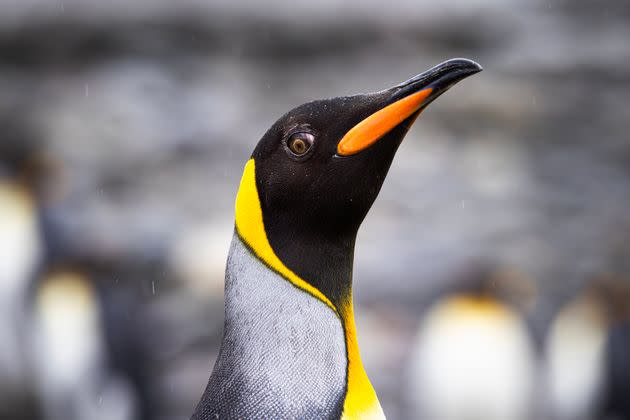People Are Just Realising Where Penguins' Knees Are, And I Wasn't Expecting That

If you’re anything like me, you probably never knew penguins had any knees at all.
Well, they do ― as author and medical historian Dr. Lindsey Fitzharris shared on X (formerly Twitter) recently.
She posted an x-ray of the bird on her page with his knees located more or less directly below the ribs ― far from the bird’s visible legs.
“Wait... so mean to tell me these guys go all over the place... in a sort of squatting walk?” one X user responded to the news.
Happy Tuesday! Penguins do have knees, but they aren't where you think they should be. #TheMoreYouKnowpic.twitter.com/9M7PcA5RPv
— Dr Lindsey Fitzharris (@DrLindseyFitz) April 30, 2024
Bird’s knees are pretty interesting in general
Even in leggier birds, like herons, you likely can’t see the bird’s “knee” ― even though you will be able to spot a backwards-facing joint.
“Their knee does bend forward like a human’s but you usually can’t see it because it’s covered by feathers,” North Dakota Game and Fish says.
National Geographic says, “That joint in the middle, which most people think of as the ‘knee,’ is actually the ankle.”
That means birds all walk on their toes ― one of which usually points backwards and is called the hallux.
As one X user commented under the original penguin post, “I’m not saying that’s a design flaw but why????”
Pheasants can even use their toes as weapons
Pheasants have elevated toes and male ring-necked pheasants have a conical protrusion called a “spur” on the base of their feet.
The spur, which grows about half an inch up from the hallux, ”[is] also present on turkeys, [and] can grow to impressive size and is used in fighting for dominance.”
The secretary bird even hunts on its... toes, I suppose, and stamps its victims to death. Each swipe of its powerful legs “can shatter bones,” Nat Geo WILD shared.
Then, there’s the obvious ― ostriches can cover more than ten feet per step with their lengthy limbs, which allow them to run up to 42 miles per hour and kick the daylights out of predators like cheetahs.
Perhaps that’s because, unlike other birds, they have a double kneecap (what’s with these birds and their patellas?).

